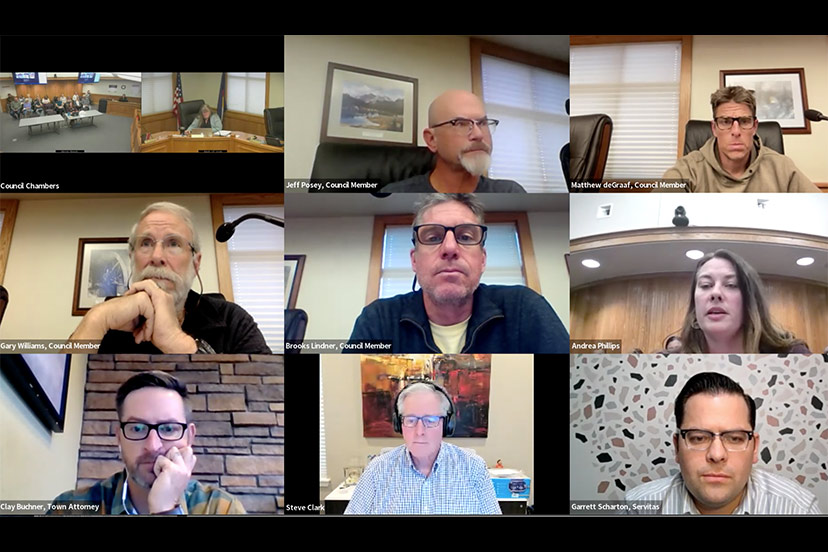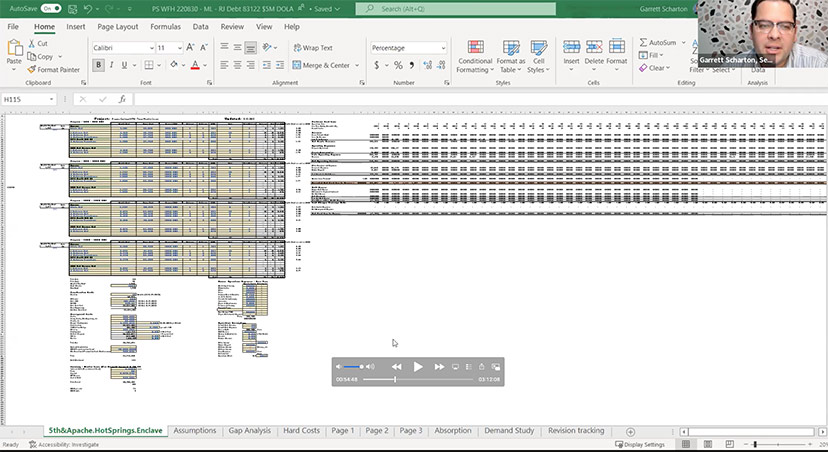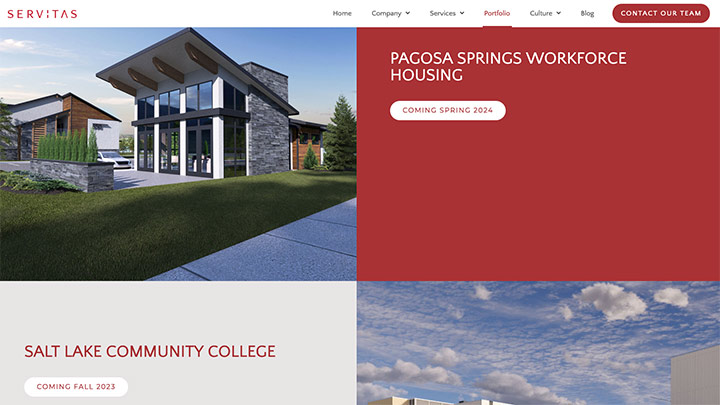At the November 1 meeting of the Pagosa Springs Town Council, Mr. Garrett Scharton, Vice President of Development Services for housing developer Servitas, was appearing via Zoom, and he asked to share his screen. As his document appeared on the Zoom screen, he asked:
“Can everyone see that?
“I don’t expect you to read it, but can you see it?”
The comment elicited laughter from the Council, because of course no one could read it.
Luckily for the Council and audience, Mr. Scharton eventually zoomed in closer to some pertinent numbers.
And interesting numbers they were. Especially to a person like myself, who sits on the board of Pagosa Housing Partners — the organization that, in 2019, researched and wrote the Town’s official plan for addressing the housing crisis. (The County government still has no plan for addressing the crisis.)
But maybe it would be more accurate to describe the Servitas numbers as “concerning”.
Many of us who’ve been paying attention to the housing crisis here in Archuleta County certainly have concerns related to the lack of a certain kinds of dwelling options. Since the late 1990s, nearly all of the housing constructed in our community has consisted of either suburban single-family homes on quarter- or half-acre subdivision lots, or luxury homes built on larger acreage. The Pagosa construction industry has produced very little in the way of multi-family apartments over the past 20 or so years, for a number of reasons.
1. People living in suburban single-family neighborhoods often organize to oppose multi-family projects, on the grounds that such projects will attract low-wage households, thus threatening ‘property values’ in the neighborhood.
2. Builders typically earn a better profit building middle-class single-family homes, and luxury homes.
3. Multi-family apartments require ongoing management, while single-family homes look after themselves.
4. The land use regulations adopted by the Town and County governments, and by local homeowners associations, have discouraged multi-family construction.
The community had also neglected to develop, over the past 30 years, new mobile home parks, even though mobile homes typically serve low-wage families and individuals — the type of workers who so often ‘benefit’ from Pagosa’s low-wage tourism industry. The reason why we have no new mobile home parks? Our local governments apparently didn’t perceive a need for low-income housing — while doing everything possible to create a tourist industry full of low-wage jobs.
As of 2022, the community might also have a shortage of single-family homes, despite the focus on that type of housing — now that approximately 1,200 of our existing residential homes have been converted into STRs — Short-Term Rentals — thanks in part to a Board of County Commissioners who’ve intentionally done very little to slow the conversion of long-term housing into temporary tourist housing.
In an economic environment of high construction costs and high interest rates — like, say, in 2022 — multi-family apartments and mobile home parks become especially valuable, if you want a tourism economy to survive
Pagosa Springs is certainly not the only American community struggling with a housing crisis, but to paraphrase a noted American politician — Tip O’Neill, a former Speaker of the U.S. House of Representatives, who claimed that “All politics is local” — we recognize that every housing crisis is to some degree “local”, and every solution is to some degree “local”.
So far, the approach to tackling the crisis, taken by the Pagosa Springs Town Council and by the Archuleta Board of County Commissioners, has focused mainly upon the idea that vacant publicly-owned land can be provided to private corporations, with the stipulation that the resulting homes or apartments are priced to be affordable to working families. The BOCC, for example, recently provided 11 vacant lots to Habitat for Humanity of Archuleta County, and Habitat plans to build homes on those vacant lots over the next four years. These will be single-family homes, deed-restricted in an attempt to keep them ‘affordable’ — even if the initial owners decide to sell them.
The Servitas development project is a bit more ambitious. 90 new dwelling units — including some apartment units — to be built within the next few years (?) and aimed mainly at middle-income workers.
But the public, who will ultimately be subsidizing this housing project with their taxes, had learned very little about the financial details of the project. That lack of public information changed as a result of Mr. Scharton’s presentation.
We’re listening here to Mr. Scharton:
“Our assumption is that we’d be up and running sometime in 2024. That is the hope, and that’s a moving target right now.
“For the cashflow assumption, everything grows through time…”
I take this to mean, “rents increase year after year,” even if local wages do not. If that’s true, then the success of this housing project would be dependent, to some degree, upon a thriving local economy.
The gross potential rent on 90 units reaches about $2.6 million in year 3… and $2.8 million in year 6… and continues to increase steadily over the next 45 years or so. The cost of operating the property increases at a similar rate, as do the “Property Management Fee” and the “Corporate Expenses.”
Servitas has experience with this type of project, which is one of the main reasons the Town subcommittee (two Council members and four staff members) selected Servitas last year. Experience is a valuable resource. It can help a company avoid mistakes. It can also help a company earn a higher profit.
To judge by their website, Servitas’ experience, thus far, has come almost entirely from building and managing student housing for colleges. When you view their ‘portfolio’ page on their website, you find 11 student dormitories, and one ‘workforce housing’ project… and the only ‘workforce housing’ project mentioned in their portfolio is located in Pagosa Springs, which might indicate that Servitas has yet to build their first ‘workforce housing’ project?
“Coming Spring 2024”?
The Town of Pagosa Springs has, basically, zero experience, when it comes to creating housing options. So the Council is reliant on the developer — Servitas — presenting a viable project that doesn’t create undue risk for the taxpayers.
The Council has also hired public finance consultant S.B. Clark to offer an experienced and independent perspective.
S.B. Clark Companies is a national, woman-owned public finance consulting firm located in Denver, Colorado offering services for Low Income Housing Tax Credits, New Markets Tax Credits, Bond Finance and more…
We will be be hearing from Mr. Steve Clark a bit later. He had a few concerns about the project.
So does Mayor Shari Pierce.




